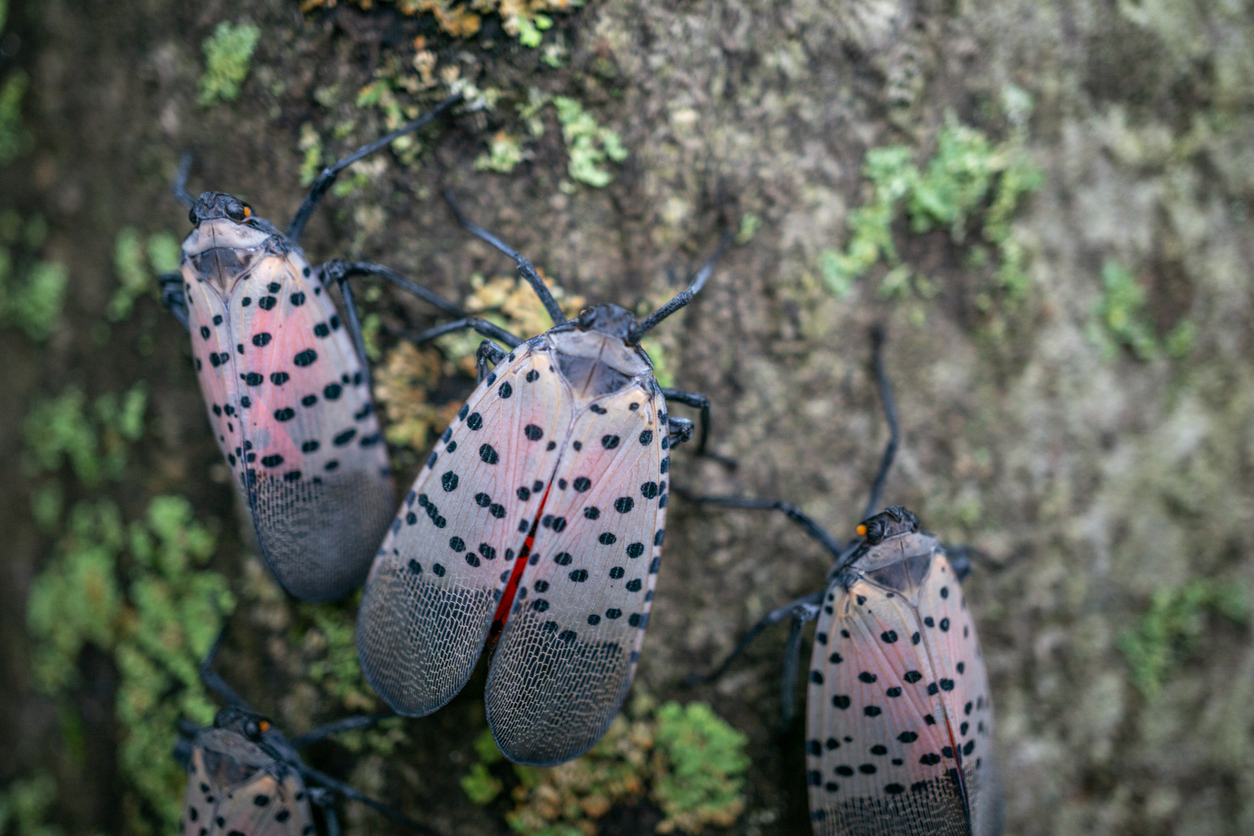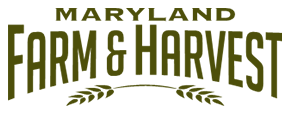Explore

Three spotted lanternflies on a tree
Spotted Lanternflies
The Spotted Lanternfly (Lycorma delicatula), also known as a lantern moth, is native to eastern Asia, China, India and Vietnam. Contrary to its name, it is neither a fly nor a moth. As you learned previously, it belongs to an insect order called Hemiptera. The spotted lanternfly was first detected in the U.S. in Pennsylvania in 2014. The species was found in Maryland in Cecil County in 2018. Spotted lanternflies are a threat to Maryland agriculture because they feed on a wide range of fruit, ornamental and woody trees. The insects’ preferred host trees include the tree of heaven, as well as the maple and willow tree. Spotted lanternflies are an invasive species and can be spread long distances by people who move infested material or items containing egg masses.
Spotted lanternflies do not bite or sting people or pets. Both adult and immature flies, called nymphs in bug form, feed by sucking sap from plant stems, trunks, and leaves. They leave a sugary substance called honeydew which supports the growth of sooty mold. This fungal disease can prevent plant photosynthesis and reduce the value or quality of fruits. If spotted lanternflies continue to spread in the United States, they could seriously impact the country’s grape, orchard, and logging industries. They feed on a wide range of crops and plants such as grapes, walnuts, apples and hardwood trees. These pests can be transported on luggage, mail, living plants, fresh fruits, firewood, lumber, grills, mowers, camping equipment or plants from a nursery.
Integrated Pest Management of spotted lanternflies is important because these pests are known to destroy crops and cause some damage to outdoor property. To prevent the spread of invasive pests, be aware of the pests that could be a threat in your area.
To interrupt the life cycle of spotted lanternflies an adult could scrape egg masses into a plastic zippered bag filled with hand sanitizer or rubbing alcohol and zip the bag shut and dispose of it properly, if there are signs of these pests in their backyard. Spotted lanternfly adults and nymphs can be crushed with gloved hands, stomped or smashed or sprayed heavily with soapy water or rubbing alcohol. Adults in your community, such as farmers or nursery workers, report detections of these species to the local state plant health director to keep track of where spotted lanternflies are seen. Pesticides, herbicides or other chemicals are used to target specific pests. These are strategies of integrated pest management. Non- chemical controls are the primary focus of IPM and chemical methods are typically avoided unless damage is significant and cannot be controlled any other way.
Now that you’ve learned about spotted lanternflies, let’s take a closer look at how these invasive species are managed on farms and around the Maryland region. Consider these questions as you watch the video.
- What methods are used to prevent spotted lantern flies from depositing eggs?
- How are spotted lanternflies migrating in the Pennsylvania and Maryland region?
- How are spotted lanternflies harmful to crops?








